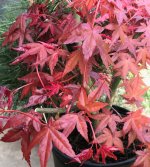Anyone else have a Seigen photo you can share? @Canada Bonsai ?
Three comments:
1 - As you know, color can change significantly based on weather, sun, fertilizer, etc. To do this properly, one would have to take pictures of unfurling buds, and then take a picture every 1-2 days for several weeks to really capture the range of color and patterns exhibited by any one tree/leaf in a season. Making sure you get a sample of leaves from the base to the tip of the shoot matters too. Then this would have to be done for 3-4 seasons. All of these pictures could then be put together and we can then say 'this is what Seigen leaves look like'! Which picture? All of them. The idea of posting a single picture never made sense to me. I attached 1 image (7421) with 4 images of leaves from the exact same specimen, taken in 2024 -- I am barely capturing the range of colours that this tree displayed in spring. Also, the transition that I am depicting can occur differently for different trees.
I have pictures of the leaves of the Seigen that I received 5-6 years ago from Japan, and I have pictures of the leaves from the same tree today. One would never guess that the leaves are from the same tree, but they are. Did the plant just need some time to work out of its system 'memories' from Japan, if I can put it that way? Are the plants acclimating to my water/nutrients/climate? Who knows. I once did a deep dive on what affects japanese maple
springtime leaf colours, and it's the kind of thing where the variables that affect color are documented but the way that we can affect those variables with any kind of precision is very poorly understood (or just really hard to isolate and control). To be honest it left me a little disenchanted about Japanese Maple cultivar
creation as a mission for my career in bonsai, and that was all I needed to push me towards focusing on Ume and Princess Persimmon above all.
Regarding the 'pink' color of seigen, I have seen this occur in two ways on the same tree: it can occur as a truly more homogeneously pink color, but also as a distinct pinkish-red and yellow which, from just a few feet away, look pink. When I say I have seen this occur in two ways on the same tree I mean that I have seen it occur within the same year on the same trees (as the leaves mature), and I have also seen it be quite different from year to year.
from reputable nursery on West Coast
2 - I won't name names and I won't ask you to, but there are 'reputable nurseries' on the west coast (and on all over the country!) that have been selling non-seigen as seigen for years, and continue to do so even when they have been asked not to. I have a very good guess as to the origin of the tree you posted and, if I'm right, those are not Seigen.
I urge others in this thread to take a few of their leaves and compare them to the picture taken from Meriggioli's book and decide for themselves based on shape. Feel free to post here a good clean picture of a few different size/age leaves from the same tree laid out flat like in meriggioli's image (not hanging on a tree).
3 - Regarding Seigen identification, leaf shape matters. Individual leaf shape matters, but also the overall image created on the tree by all of the leaves together, especially in the spring but this essence remains present all year. Now I want to be very clear that I don't recommend that we go around identifying maple cultivars by how they look from 15' away (in fact, I am opposed to maple cultivar identification period), but I will say that if one's tree is not giving this overall impression that is so characteristic of Seigen, that is at least one reason to look deeper.












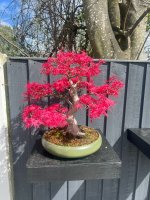


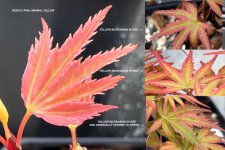


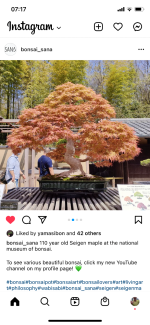

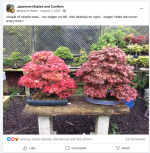

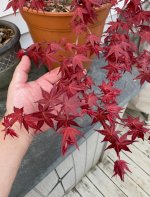





![_snapshot_09.46_[2020.03.28_17.58.46].jpg _snapshot_09.46_[2020.03.28_17.58.46].jpg](https://www.bonsainut.com/data/attachments/578/578517-bd6f469c8bcb8525ce722987bf4c60f4.jpg?hash=1nIByGNoqN)




